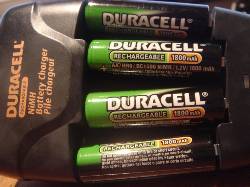

In addition to its high energy density, the Enercell LR1 (N Size) 1.5 Volt Alkaline Battery has a long shelf life. This makes it ideal for use in devices that require a lot of power, such as cameras and other electronic equipment.

The battery is designed to deliver a consistent and high-power output, ensuring that your devices run at peak performance. This means that you can rely on the battery to power your devices for an extended period without the need for frequent replacements.Īnother advantage of the Enercell LR1 (N Size) 1.5 Volt Alkaline Battery is its high energy density.

The battery is made with premium materials, ensuring that it is durable and long-lasting. One of the main advantages of the Enercell LR1 (N Size) 1.5 Volt Alkaline Battery is its high-quality construction. The battery is designed to provide a stable and consistent power supply, ensuring that your devices operate at their best. The LR1 (N Size) battery is commonly used in devices such as car remotes, cameras, pagers, calculators, light-meters, clocks, and alarms. then.I will be confused too.Enercell LR1 (N Size) 1.5 Volt Alkaline Battery is a reliable and long-lasting battery that is ideal for use in various electronic devices. If you will find out that the charger keeps charging for any value of R_ext and the charger signals an error even if the battery under charge has a nominal voltage. Please note that the charger will see now the sum R_bat + R_ext. The value of the resistor is likely small (we can start with 1Ω for example) and find out from which value the charger starts to complain and signals it is a bad battery.
#Enercell rechargeable aa batteries series
Then we insert externally a resistor R_ext (as if it were internal) in series between one terminal of the charger and the corresponding pole of the battery. On the other hand, perhaps we can check the validity of this 'internal resistance' idea for a charger by doing just the opposite as it follows:įirst, we find a good battery that the charger can charge it normally. Then we remove the resistor and notice how much the battery voltage drops (Vbat1-Vbat2): We measure the two voltages V_res on the resistor (R_ch) and V_bat1 on the battery. One easy method is to wire the battery as if we like to charge it via a resistor. If the charger refuses to continue charging the battery though its voltage is nominal then we can conclude that it detects its internal resistance (R_bat) first which usually increases with time. But if dissipation is not a problem (by using a power resistor or many resistors in parallel, series or both, to get R_ch), using 12V for example can let the charging current be rather constant while V_bat is increasing with time. R_ch = (Vcc - V_bat) / I_ch (worst case is when V_bat=0)įrom the formulas above it is better to choose a low Vcc to decrease dissipation (not higher than 5V). The charging current (I_ch) doesn't have to be high since we are not in a hurry :wink: This can be done via a resistor and a DC supply. If its voltage is too low then we should try charging it with a simple method till it restores its nominal voltage.

#Enercell rechargeable aa batteries how to
Sorry, I couldn't get your point on how to let the charger see the battery as having internal low impedance.īy the way, I supposed that measuring the voltage of the old battery gives a nominal value (for example like 1.2V or a bit less).


 0 kommentar(er)
0 kommentar(er)
